Making Invisible Histories Visible
Page Navigation
- Making Invisible Histories Visible
- Lesson Plans and Resources
- iBooks on Omaha and Nebraska History for Primary Students
- Omaha Mapping Projects
-
African American Histories
- African American Artists
- African American Athletes & Facilities
- African American Churches
- African American Civil Rights Organizations - 1950s-1960s
- African American Civil Rights
- African American Contributions to Jazz, Gospel, Hip-Hop
- African American Dramatic Arts
- African American Education - Dorothy Eure & Lerlean Johnson
- African American Educators & Education
- African American Firefighters
- African American Homesteaders
- African American Law Enforcement
- African American Migration to Omaha
- African American Musicians of Omaha
- African American Newspapers
- African American Owned Businesses
- African American Politicians
- African American Social Life
- African American Workers at Omaha's Railroads & Stockyards
- African American Workers at the Naval Ammunition Depot in Hastings
- African Americans in the Civil War
- African Americans in Vietnam
- Charles B. Washington - Journalist and Civil Rights Leader
- Elizabeth Davis Pittman - Lawyer/Judge
- Green Book Omaha
- Marlin Briscoe - Professional Football Player
- Native Omaha Days
- Nebraska's Role in the Underground Railroad
- Sen. Edward Danner - Politician & Civil Rights Activist
- Sudanese Refugees
- Tuskegee Airmen
- European and Asian Immigrant Histories
-
Historic Neighborhoods & Buildings
- 24th and Binney/Wirt/Spencer Streets
- 24th and Lake Streets
- Central Park Neighborhood - 42nd and Grand Avenue
- Dahlman Neighborhood - 10th and Hickory Streets
- Hartman Addition Neighborhood - 16th and Williams Streets
- Indian Hills/Southside Terrace Neighborhood - 30th and Q Streets
- Jefferson Square Neighborhood - 16th and Chicago Streets
- Long Neighborhood - 24th and Clark Streets
- Orchard Hill Neighborhood - 40th and Hamilton Streets
- Smithfield Neighborhood - 24th and Ames Avenue
- St. Mary's Neighborhood - 30th and Q Streets
- Latino Histories
- Music Histories
-
Native American Histories
- Black Elk and John G. Niehardt
- Chief Standing Bear and Susette La Flesche Tibbles
- Dr. Susan LaFlesche Picotte - Native American Doctor
- Native American Education and Boarding Schools
- Native Americans in the Military
- Pre-statehood Interaction of Native Americans and Europeans
- Preserving Native American Tradition
- Restoring the Ponca Tribe
- The American Indian Movement in the 1960s and 1970s
- The Indian Congress at the 1898 Trans-Mississippi Exposition
- The Omaha Native American Indian Tribe
- OPS Elementary School History
- Redlining in Omaha
- Nebraska's Role in the Underground Railroad
- The 1898 Trans-Mississippi Exposition
Indian Hills/Southside Terrace Neighborhood - 30th and Q Streets
-
How does the history of South Omaha impact and reflect the current state of the neighborhood?
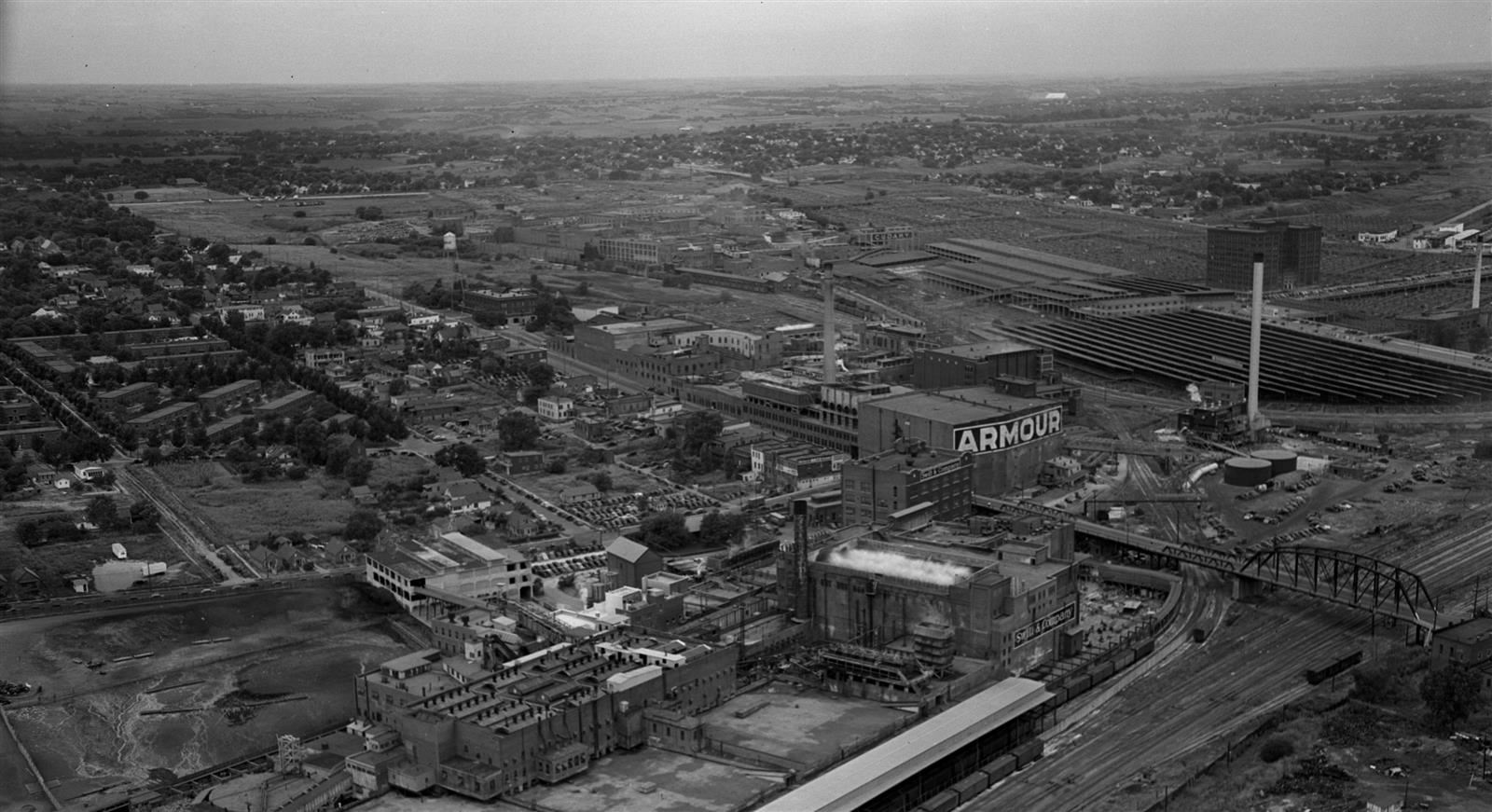
-
Neighborhood
The Indian Hills neighborhood is located in South Omaha, just south of 30th and Q streets. Our neighborhood is full of vibrant culture and liveliness, and almost every resident is full of passion and love for their community. South Omaha, known as “The Magic City”, used to be its very own city, with streetcars, a postal office, and a city hall. The nickname “Magic City” originated from the “magical” growth of South Omaha due to Eastern European immigration from the late 1880s to the early 1890s. The city went from a population of about 600 in 1886 to a population of 8,000 in 1890. Immigration patterns started with mainly German, Irish, and Scandinavian immigrants. Then came other Eastern Europeans, and in the 1920s, Mexicans and Latin Americans. Most immigrants came to Omaha lured by the stockyard job opportunities. Photo: An aerial from the Q Street viaduct looking northwest in 1947. Shows the Armour Packing and Southside Terrace. (The Durham Museum Archives-JS38A-044)
VIDEO: Memories of South Omaha. MIHV 2021 student interview with two longtime South Omaha residents, Mark Dasovic and Anita Rojas.
Neighborhood History
The Union Stockyards were and still are a major part of South Omaha’s history. The stockyards were founded in 1883 by the Union Stock Yards Company of Omaha.
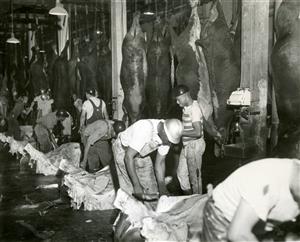
This 1967 Omaha World-Herald photo captures workers at the Armour meat packing plant in South Omaha. Working conditions were substandard. It was dirty, they smelled terrible, and you often worked long hours. While the stockyards were not an ideal place to work, people who could not find jobs in other places, such as immigrants, people of color, and the poor, were given job opportunities. The stockyards were one of the first job places to be desegregated because they couldn’t afford to not allow people of color or immigrants to work. They needed all the hands they could get. The stockyards were one of the most important economic revenues in South Omaha, and still are today. Not only have they boosted South Omaha’s economy, but they attracted workers who brought their culture and their families. These people are the reason South Omaha is known as the Magic City, and their culture should never die out.
But, the stockyard jobs didn’t pay the workers much, causing most of them to resort to public housing, such as Southside Terrace Apartments.
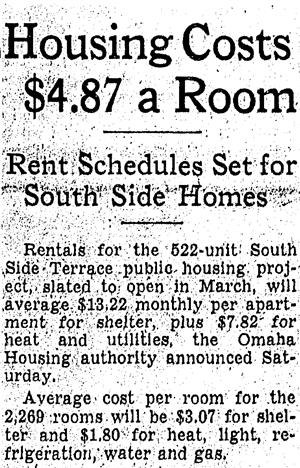
Southside Terrace was and still is public housing in South Omaha. There was a set rent schedule for Southside Terrace based on one’s income, as seen in this Jan. 14, 1940, Omaha World-Herald article. Many occupants worked in the stockyards. The stockyards did not pay the workers a lot of money, so the rent of each apartment was considered expensive back in the 1940s. Not only did the workers not get paid a lot of money, they also weren’t living in the best conditions. The workers were primarily immigrants who were living in rat-infested homes. This led to the construction of Southside Terrace in the 1940s.
After a long day of work, the people working in the stockyards would travel to 24th Street on the streetcars. Twenty-fourth Street was and still is the heart of South Omaha and provides the residents with restaurants, entertainment, shops, and businesses to serve their everyday needs. Twenty-Fourth Street exudes the cultural diversity of the neighborhood through its businesses and its consumers.
The stockyards left South Omaha for a couple of decades, but then returned, bringing back more jobs. This return caused another wave of migration, primarily immigrants from Mexico and Latin America. In 2021, the stockyards still stand and continue to provide jobs for hundreds, while 24th Street reflects its rich immigrant history of the past and present. The cultural vibrancy in South Omaha from so long ago is still here, along with the resident’s passion and pride for their community.
Project Site
Jetter’s Brewery was located at 30th and Y streets, and it was the first brewery in South Omaha. They had a ballroom where people would gather for entertainment. Jetter’s produced alcoholic beverages. In 1917, the brewery was sold to Nutrina Feeds but the building was later knocked down.
VIDEO: History of Omaha's 30th and Y Area. A MIHV 2021 student video sharing the history of Omaha’s 30th and Y area when it was Jetter Brewery and Nutrena Mills and what the future could bring.
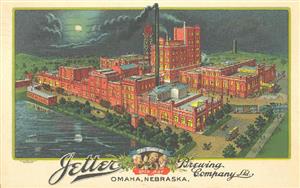
When Jetter’s Brewery first opened, South Omaha’s population was growing exponentially, and the brewery provided jobs as well as a leisure activity for the new residents. The brewery fits into South Omaha’s theme of growing and providing jobs. The postcard of Jetter’s gives us insight into what the building looked like in its prime.
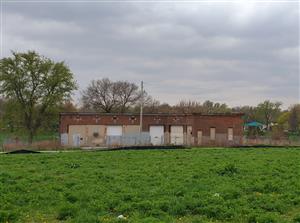
Jetter Brewery's remaining building and the surrounding empty lot are what we were tasked with revitalizing in our neighborhood. The last standing part of the building is the ice house. Our group was working on ideas on how to restore the building.
VIDEO: Vision for South Omaha Today. A MIHV 2021 student interview with a South Omaha neighborhood leader, Anita Rojas, and her vision for South Omaha.
Project Plan
Our business plan is to open a very flexible, open, community area where people can sell their products, host events, and rent out rooms to study/work/meet in. There is room for expansion on every side of the building, so when our business succeeds, we will be able to expand. We would hire two to three managers to oversee vendors, meetings, etc. Our mission/vision statement is that people would be able to come together and not only support us, but also the local vendors selling their things.
The location would be in the old Jetter brewery building. There wouldn’t be much competition because there aren't really any other marketplaces in the area. Our marketing strategy would be to advertise as much as possible. We have to get the word out about the building/market. The employees would be the vendors because they are the ones selling their things to people. They are the ones bringing in foot traffic. The vendors would also be responsible for cleaning their area, which would encourage investment in the community, and taking care of their neighborhood. To acquire the money needed to renovate this building we would probably get a loan, but we could also start a fundraiser to fund the restoration of our building. Our contingency plan would be to recruit vendors and have vendors help advertise.
Student Reflections
-
In this program, I learned so much. I learned the history of Jetter’s brewery, the community and people of South Omaha, and I learned about 24th street and its history with the streetcar stops. My favorite part was Anita’s interview and the words of wisdom she spoke. I also liked when we went past 24th Street and all the different stores and places we got to go and eat. In addition, I liked how we all worked together to create something great like our project. Lastly, I just really liked the people that were in the program and how encouraging and inviting they were to the students like myself. -Carina H.
I have learned so much through the MIHV program. I have gotten tons of information about the history of South Omaha, and the history of our given neighborhood. My favorite part of this program was going out into our neighborhood. If felt so much more interactive than me just sitting in a classroom getting taught the history of the neighborhood. I also really liked conducting the interviews. It was so interesting hearing the stories of residents who have lived here for decades, and who have all of this information and all these stories about South Omaha, and Omaha in general. This program has taught me how to research, how to find the history of a building or place, how to conduct an interview, and so much more. I’m extremely thankful for this opportunity, and all of the other opportunities that will come because of this program. -Evelyn L.
Resources
-
Interviews – July 2021:
Mark Dasovic, Petersen & Michelsen Hardware
Marianna Foral, City of Omaha Neighborhood Planner
Vince Furlong, Educator and Historian
Lasha Goodwin, City of Omaha Neighborhood Planner
Rebecca Harrison, A Midsummer’s Mural
Juan Padilla, Canopy South
Anita Rojas, Indian Hill Neighborhood
Crystal Sierra, Canopy South
Archives:
The Durham Museum Photo Archives
Omaha World-Herald Photo Archives
Publications:
Sanborn Maps of 30th and Y area in 1901 and 1962
Orr, Richard. O&CB Streetcars of Omaha and Council Bluffs. 1996. Print
Omaha Historic Streetcar System an Intensive Level Survey of Preservation Resources. 2017
Ursch, Blake. Nebraska Craft Beer: A History and Guide to Beer Made Here. Omaha World-Herald 2019. Print
Omaha World-Herald (online), 27 Aug 1972 page 25. Feed Sacks are Sentinels where Jetter Beer Bubbled
Omaha World-Herald (online), 14 Jan 1940 page 1. Housing Costs $4.87 a Room. Rent Schedule Set for South Side Homes

